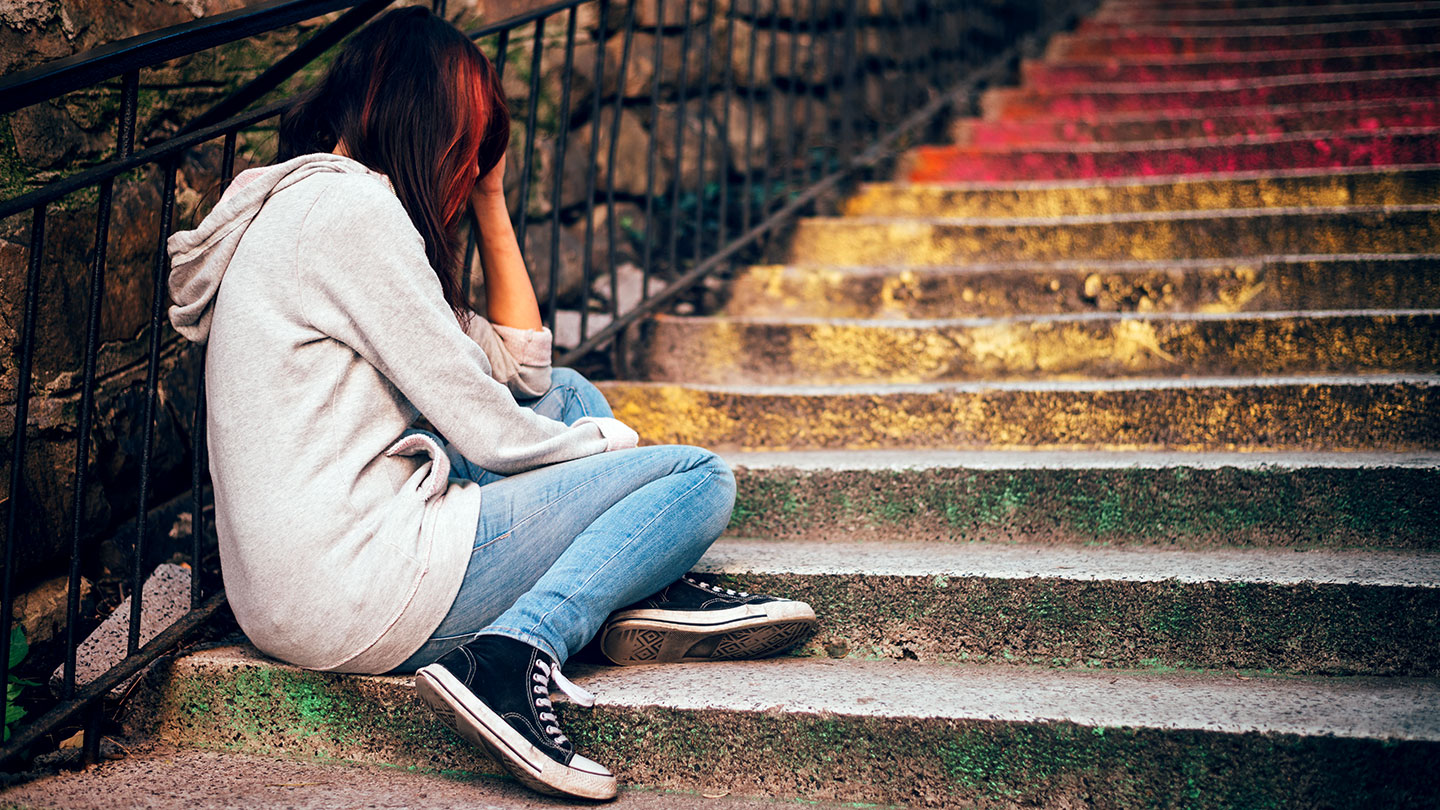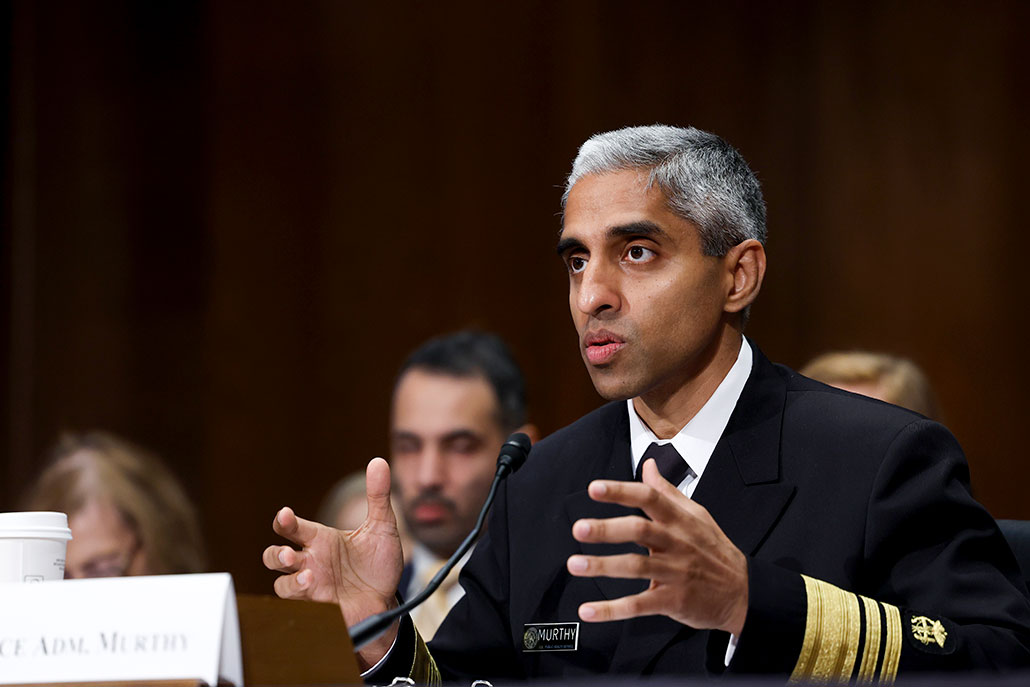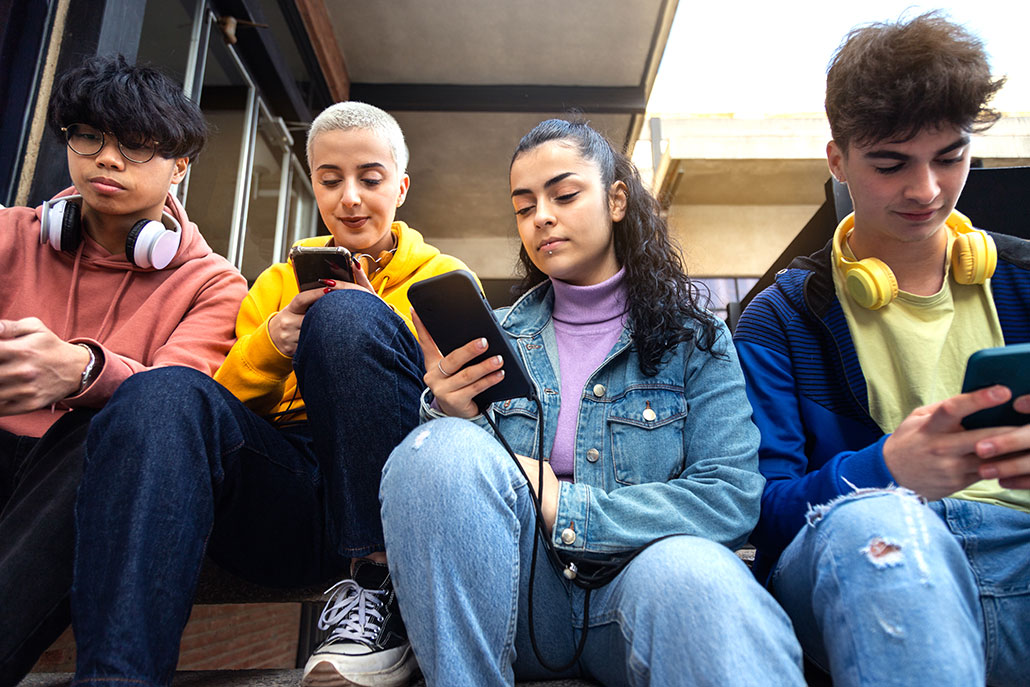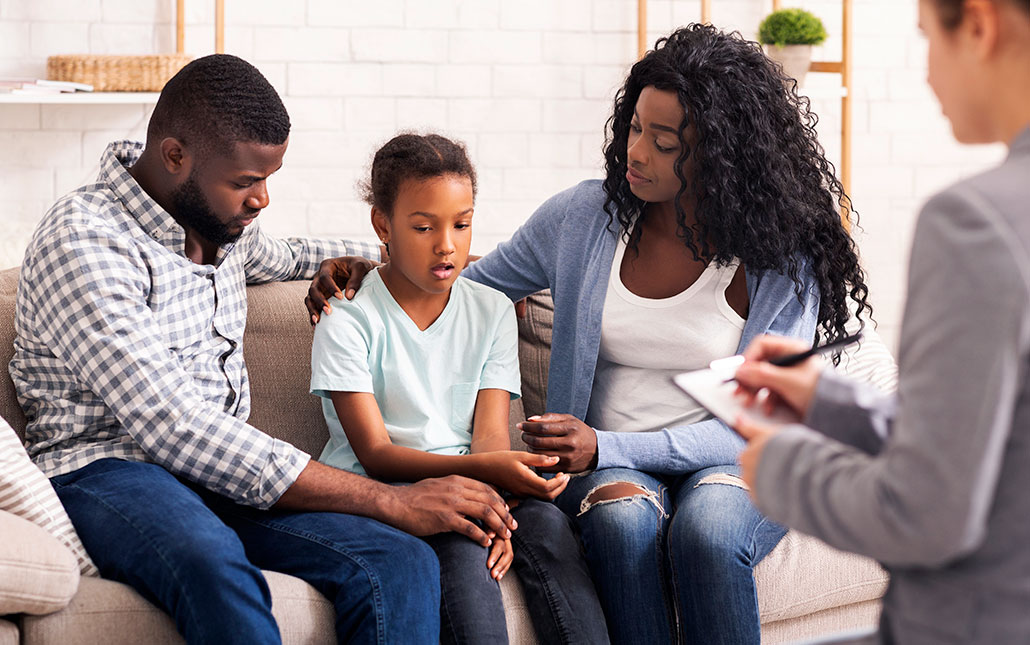Being a teen has always been hard; now it’s especially so
Feeling sad and alone has become common. Here’s how to find help — and why to do it now

One in three high school students report long periods of sadness or hopelessness. Among girls, half say they feel this way. Such an epidemic of feeling bad affects younger kids, too. But these dark periods won’t last forever. And data now show that getting treatment can ease such rocky periods.
pixelfit/E+/Getty Images Plus
By Erin Ross
Audrey Wang is a driven teen. She’s a good student, skilled at coding and has a supportive family. But despite all this, Audrey has just never felt “good enough.”
She knew what she’d accomplished. Still, that didn’t stop her from feeling sad. Why could others thrive when she just didn’t seem able to?
In fact, Audrey far from alone. What she felt is a type of mental illness. Many people at some point experience such conditions, such as anxiety or depression. And for the last several decades, the share of kids for whom this is true has been growing.
“Doubting one’s abilities is actually pretty common. It’s normal to feel this way,” Audrey says.
In 2009, more than one in every four U.S. high school students (26 percent) said they had long periods of sadness or hopelessness that wouldn’t go away. Ten years later, that number had increased to one in three high school students. Half of all girls now report feeling this way.
Untreated, this can be dangerous. In 2009, roughly six in every 100 high school students felt so bad they attempted suicide. Ten years later, the rate was almost nine in every 100 — a rise of roughly 50 percent. Younger kids can experience this feeling of hopelessness, too. By 2020, suicide had become the second leading cause of death in 10- to 14-year-olds.
When the pandemic hit, rates of mental illness and depression rose even more. It got so bad that in October 2021, U.S. medical experts declared this a national emergency. U.S. Surgeon General Vivek Murthy is the nation’s chief doctor. He issues advisories about major health issues. In December 2021, he issued an advisory warning about mental health in U.S. kids.
“The challenges today’s generation of young people face are unprecedented and uniquely hard to navigate,” he wrote in the advisory. “The effect these challenges have had on [kids’] mental health is devastating.”

Although many aspects of life have “returned to normal” since 2020, rates of anxiety and depression in young people remain high.
Lindsay Overhage studies health policy at Harvard Medical School in Boston, Mass. She looked at insurance claims to get an idea of how often people under 18 visit hospitals for mental health issues.
During the pandemic, “there was a big increase in emergency-department visits, especially for girls,” says Overhage. “And that continued to increase post-pandemic.”
It isn’t clear why more and more kids are impacted by mental illness each year. Some researchers have flagged social media as one likely cause.
But there is encouraging news. These dark periods won’t last forever. Getting treatment can help make this rocky time easier. We’ve also got some guidelines for finding help.
But first and foremost: Know that even though you may feel alone during periods of doubt and low self-esteem, you aren’t. Feeling bad has become all too common. What’s more, doctors emphasize that no kid needs to accept this — nor suffer alone.

What’s happening?
From the time we’re 10 through at least age 19, our brains grow rapidly. As our brains rewire themselves in preparation for adulthood, our identities will shift, as will our sense of self. At the same time, peer pressure reaches an all-time high. Amid all this biological and emotional tumult, mental illness can rear its ugly head.
It sometimes made Audrey feel like she didn’t belong — like she was a phony, a fraud. Then Audrey attended a panel on women in tech and learned there was a name for her feelings: imposter syndrome.
“Comparing my life to my peers often exacerbates imposter syndrome, whether that is test scores, fashionability or achievement,” Audrey says.
People with it have trouble accepting success. They might feel like the good things they’ve done are just due to luck. It might feel like they tricked people around them into thinking they’re smart or skilled. Imposter syndrome can lead to spiraling thoughts of self-doubt.
It can also trigger anxiety and depression.
Not all sadness and anxiety is due to illness. Such feelings can be a healthy response to big, traumatic events — like the loss of a loved one, a move or a global pandemic. But sometimes there is no obvious trigger, or these feelings won’t go away. That may point to true illness.
It’s sort of like the sniffles or a cough: Everyone gets these symptoms from time to time. After a few days of rest, we’ll usually feel better. But sometimes resting isn’t enough. Or it might get so bad we can’t carry out our normal activities. Then, it’s time to see a doctor and check out whether it’s something more serious.
Similarly, feeling anxious or depressed is also normal. Sometimes we can make these feelings go away. Taking a break can help. So can taking deep breaths or talking about those feelings with someone we trust.
But when we feel worried or very sad for a long time, this may be a true disease — a mental illness — and warrant calling in outside help.
Am I ill … or just sad?
“It’s okay to not be okay,” says Nicholas Carson. A psychiatrist, he studies youth mental health. And “it can be hard to believe,” he adds, “but everyone goes through times like this.” Carson works for the Cambridge Health Alliance (CHA). It’s in Cambridge, Mass.
“It’s okay to not be okay.”
Nicholas Carson
What are the warning signs of true illness?
“Maybe you feel like you’ve done something wrong,” Carson says — “like you’re not worthy of being loved or having good things come your way. But that’s not true. You deserve to be loved and cared for.”
Or you may feel hopelessness. You may have trouble getting out of bed. You may feel like you’re moving through sludge or think about hurting yourself. Perhaps doing normal tasks starts to feel too hard.
These dark feelings are symptoms of illness, Carson says.
If this sounds like you or someone you know, find a trusted adult and tell them. And do it right away.
That adult might be a parent or guardian or teacher. They might be a friend’s guardian. It could be your neighbor. It should be someone who makes you feel safe. Tell them about how you’re struggling. And ask them to help you find help, Carson says, because even if it might not feel that way, you deserve to be supported.
“That can be really hard to remember when you’re feeling depressed or really anxious,” he adds. “So just remember that there are a lot of people out there who want to offer help and know how to offer help.”

Seeking help and finding support
Sometimes depression is triggered by trauma. Other times it just sort of happens — seemingly out of nowhere, says Munya Hayek. She’s a child and adolescent psychiatrist at McLean Hospital in Belmont, Mass.
It’s important for kids to realize, she says, that “you don’t need to have a big reason [like trauma] to feel depressed.” In fact, it can even be due to an imbalance in brain chemicals.
Whatever its cause, she notes, “It’s still valid and you still deserve help.”
Yet asking for help is often the hardest part, she says. Depression and anxiety can make it tough to reach out. Yet with help, those feelings of hopelessness can go away.
“Therapists are there to help kids,” Hayek explains — “to support them, and listen. And it’s really the kids who guide what they want to talk about.” As such, she says therapy can be “a safe environment where the kids get to control the conversation.”
In therapy, kids can expect to learn skills to cope with intense emotions. They might also learn to communicate better.

And everything you tell a psychiatrist or other therapist or counselor will be confidential. They’ll share what you tell them only if it concerns your safety or the safety of others.
But be aware that finding help may take a bit of work.
Psychiatrists are medical doctors who specialize in mental health. They can provide counseling and therapy. They also can prescribe medications and treat hospitalized people. Unfortunately, in the United States, there aren’t enough of these doctors.
Currently there are just 14 child and adolescent psychiatrists per 100,000 children in the United States. That’s according to the American Academy of Child and Adolescent Psychiatry. It’s based in Washington, D.C.
Even outpatient resources have been strained. That’s something that Carson, at CHA, has seen firsthand. “Our waitlists doubled compared to what we were seeing before the pandemic.”
That doesn’t mean help isn’t available. It just may take some patience. It might mean turning to online therapy and telehealth. Or it may mean finding alternative sources for that help.
How kids can help each other
Gen Z has a well-earned reputation as an activist generation. Since mental-health resources are limited, some young people are doing what they can to pitch in. High schoolers and college students have started mental-health support groups. Others have joined activist organizations, advisory boards or advocacy groups.
There’s power in groups like these, says Valeria Chambers. She is a researcher at the CHA Health Equity Lab. She also founded a local group known as Black Voices: Pathways 4 Recovery. As a peer-support specialist, she leads — and helps others lead — mentoring and support groups. Here, kids can share their stories.
One such group is CHA’s Youth Advisory Board. It’s where kids come together and help advise CHA’s research on mental health. But sometimes, these kids just support each other.
For participants, it can be incredibly validating, says Chambers. “It is a chance to be taken seriously, to be valued.” No matter how old you are or what you’ve been through, she says, your experiences are respected and insights welcomed. “It is very empowering.”
Getting the support of a friend in difficult times is crucial. Friends can sometimes be the first people to notice when something is wrong. Just talking and being a good listener can be a big help.
“But sometimes the best thing a friend can do is help someone talk to an adult,” says Janis Whitlock. She’s a research scientist at Cornell University who is based in Colorado. There, she studies mental health in adolescents and young adults.
Coding and cookies
In March 2020, Audrey Wang was in 8th grade. She was looking forward to high school and the next big thing.
Then the pandemic hit — and the world shut down.
Audrey spent her first year of high school entirely online. She sometimes found distance-learning lonely. But the pandemic and everything that came with it also gave her more free time.
“During that break, I was refining my skills,” she says. The teen learned more about coding and computer science. Audrey wanted to improve her skills because she had an idea: She could create a website.
Like many Gen Z teens in 2020, she found herself spending more time on social media. And she noticed some of the ways it brought her pain. She also noticed some of the ways it could help. So she created Affective Cookies. The website was her “response to the negative parts of social media.”
The site uses a computer model based on AI. Audrey wrote the code to make it deliver a social-media feed that’s focused on mental health. “It separates your posts into four categories: content that is positive, neutral, mental-health sensitive or negative.” She said this lets you “decide what you want to see.”
The website also analyzes posts as you make them. It attempts to figure out the sentiment behind them.
If a post has a positive message, the user gets a “cookie point.” This encourages the user to post more positive content. Users also can make a “mental-health card,” which encourages self-reflection.
Says Audrey, “I’ve noticed that when you self-reflect, it helps you see the positive things in your life.”
Her card includes people, such as her family and close friends, and her long-term goals. The teen was stuck in one place during the pandemic. So her card also includes places she’d like to travel. For instance, she notes, “I’d love to visit the Galapagos Islands.”
Today, Audrey is a high school senior. She’s made advocacy for mental health a big part of her life. She’s on the youth advisory board for Lady Gaga’s Born This Way Foundation, for instance. She’s also on an advisory board for the Technology and Adolescent Mental Wellness (TAM) Program.

Audrey’s even a peer leader at GoodForMedia, a peer-mentoring program. It lets older teens and young adults help younger teens learn how to safely navigate social media. Last April, Audrey’s work was recognized by The Jed Foundation (JED), a nonprofit focused on suicide prevention. They gave her the Student Voice of Mental Health Award.
Audrey hopes that her work will inspire other Gen Z’s, especially girls and young women, to pursue careers in technology. She also hopes it will encourage them to take care of their own mental health — and, if they choose, to advocate for the mental health of others.
“There’s not just one way to advocate for others,” Audrey says. It might be teaching. It could be coding an app. Some may choose to be a mentor. And sometimes, it just means being a friend.
Suicide was the third leading cause of death among U.S. teens ages 15-19 in 2021. If you or someone you know is suffering from suicidal thoughts, please seek help. In the United States, you can reach the Suicide Crisis Lifeline 24/7 by calling or texting 988. Please do not suffer in silence.







